A Photography Adventure in Iceland

Iceland is a nordic island nation in the far north of the Atlantic Ocean. Known as the land of ice and fire due to its volcanic activity and towering glacier features across the island. From the desolate volcanic fields in the central highlands, glacier-covered peaks in the south, and gently rolling hills of the north it seems everywhere in Iceland has risen straight from a fairytale just at that very moment.
All major flights arriving in Iceland land at Keflavik International Airport (KEF). This small international airport is located on the southeastern part of the island, about 30 minutes away by car from the capital Reykjavík. If flying from the Americas I highly recommend the redeye flight to help you adjust to the different time zone (5 hrs ahead of EST). If you're lucky you may even catch the aurora during your flight!

Another big tip I can give you while planning your Iceland adventure is to book your rental car as early in advance as you can. The island nation sees nearly a million tourists a year and the only way to truly see the island is by car. The price of these vehicles will only keep climbing the closer you are to your trip. You'll also find the selection severely reduced if you try booking only a week before your trip. While we are talking about vehicles let's discuss the two main roadways in Iceland, the ring road and the F roads. The ring road is the main roadway that encircles the entire island and is where most attractions (and tourists) can be found. F Roads are unpaved gravel roads only accessible by 4 Wheel Drive capable vehicles. When booking your rental car to Iceland be sure to book a 4WD capable vehicle if you have any plans to venture off the main path. Police monitor the F Roads as it is unlawful to be on one in a non-4WD vehicle and you will be fined.

Now that you've made your booking, it is time to set up your credit card for petrol purchases in Iceland. All pumps are self-serve and require a card for purchase, so no cash sales for petrol. Not only is it card only, but your card must have a 4-digit pin assigned to it to purchase petrol. You'll be able to make purchases in increments of 4000, 6000, 8000, 10000, and 12000 ISK (Icelandic Krona) and most petrol stations. This roughly converts to $25, $42, $55, $68, and $82 USD. Be careful though, every petrol station will put a hold on your card for double the amount of petrol that you pump for three days. If you plan to see the entire island (825 miles or 1,328 kilometers on the ring road) then you will rack up quite a big hold on your card.

The capital and the Blue Lagoon are two of the most visited places for tourists to Iceland and where I spent the least amount of time. The capital is home to nearly 123,000 people with another 94,000 in the capital region around the city.

That's nearly half the entire population of Iceland living in just this area alone. Couple this with the number of annual tourists and it feels like a madhouse. No one comes to Iceland for the city experience either. Not that my time in Reykjavík was bad, just that there are so many amazing things to see in the wild places of the country I didn't want to spend time there. What little time I did spend in the capital was visiting the iconic Hallgrímskirkja church in the heart of the city. Constructed in the 1940s, the church's iconic architecture resembling the island's basalt columns has made it famous for visitors. You can also pay a minimal fee ($7) to take an elevator ride up to the bell tower and overlook the city. Spoiler alert, the bells still ring every 15 minutes, and if you are in the observation tower when they ring be sure to cover your ears.
The Blue Lagoon geothermal spa is located south of Reykjavík about an hour by car and felt every bit as crowded as the center of Reykjavík. Boasting over 700,000 tourists annually, the place is perpetually packed. The lagoon combats overcrowding by having guests select a time slot to arrive at the lagoon so be sure to book your arrival time before they sell out. My party and I had an arrival time of 9 AM and it was already quite busy. Entry cost is $60-80 USD depending on the availability of tickets per timeslot. This price includes your admittance, a free drink, and a silica facemask during your stay. Of course, there are many spa treatment packages available for purchase on their website ranging from massages to dining options. Check out everything they have available on their website.
Once you've arrived at the Blue Lagoon you'll be greeted by the front desk staff and given a bracelet that has all your credit card info attached and sent to shower and change in the locker room. Once you've showered and changed into your swimwear you can head out to the heated geothermal pool. The pool is heated by geothermal seawater pumped up from 2,000 meters beneath the earth cooling as it rises to a comfortable 100 Fahrenheit (38 Celsius) inside the pool. The pool's iconic blue hue is a result of the reaction of the water to the subterranean volcanic aquifers. Once that water cools Silica is released and gives the water a blue hue as well as coating the surrounding volcanic rock in white silica. If you are looking for accommodation and have a want for 5-star luxury, the lagoon offers two stunning accommodation options, the Silica or Retreat Hotels. I had the opportunity to spend time inside the Retreat Hotel and it was absolutely stunning. From the architecture, room design, and overall tone of the space, the atmosphere oozes natural minimalism. Everything about your time at the Retreat Hotel is centered around nature. Around the landscape surrounding the building. You also have access to a private spa and blue lagoon included in your stay which truly changes the entire experience. The serenity and stillness of the lagoon are extremely pleasant when you aren't bumping elbows with strangers. This comfort does come with a price tag though. Rooms start at $1,323 USD per night for the Moss room and climb to $2,326 for the Lagoon Suite with your own private lagoon attached. You can find rooms and rates for The Retreat here.
Overall I enjoyed my time at the Blue Lagoon but found myself being bored rather quickly. Again, you're just walking or sitting in an oversized hot tub. If that's your thing and you are just there to relax then you will love the Blue Lagoon. I was in Iceland to adventure.
By far the most popular stops along the ring road are found in southern Iceland. From towering waterfalls to black sand beaches, calving glaciers to lava flows this is your destination.
Leaving Reykjavík on the ring road puts the city behind you and on to rolling farmland as far as you can see. Most likely you'll look to either side of the car and find Icelandic ponies, sheep, and hay stacked in rows. While this is relaxing it is not what I came to Iceland for. Quickly enough you will pass these open fields and find yourself on the gateway to adventure, Seljalandsfoss. This is the first waterfall I visited and you can walk all the way around this one! Be prepared to get wet though as the wind will push the mist back on you. 
Quickly enough you will notice that the southern end of Iceland is extremely popular and just expect every carpark to be near capacity. Keep in mind as well that you have tourists from all over the world who aren't used to driving. Good Luck. Also, you will quickly realize that the speed limit across the ring road (aside from cities) is 55 MPH (90 KPH) and most locals will pass you for staying under that speed limit. I found myself going usually around 100 KPH as the road is well maintained and easy to drive.
A great thing to note about the southern end of the ring road is that everything is roadside. Waterfalls, glaciers, and beaches are all within a 3-minute walk from the car. The places I would most recommend are the Black Sand Beach at Vik, Skogafoss, Seljalandsfoss, and Diamond Beach.
all within a 3-minute walk from the car. The places I would most recommend are the Black Sand Beach at Vik, Skogafoss, Seljalandsfoss, and Diamond Beach.
As you continue along the ring road you'll pass ancient lava fields now covered in moss and braided rivers all around you. The mountains creep ever closer to the sea until you reach Hofn, a small fishing village and the start of the eastern edge of Iceland. Here you will find some of the most dramatic and iconic scenery in Vestrahorn and Estrahorn mountains. The larger and more popular stop is at the base of Vestrahorn mountain. Here, you can pay a small fee ($10 USD) to drive down to the black sand dune beach to see the magnificent rocky peak from the best angle. If you have a drone and the weather is kind, I recommend driving 20 minutes down the road to the smaller Estrahorn mountain and capturing the view you see below.
Continuing along to the east via ring road brings you to the eastern fjords of Iceland. I myself didn't make very many stops along this section of the road. The only attraction I went to see was somewhat inland and off the main road at Stuðlagil Canyon, a basalt river canyon made famous for its strange columns of basalt that line the river.
Passing into the northeast of Iceland brings you to the vast empty waste of previous volcanic activity. This barren land is made up of brutal jagged lava rock as far as the eye can see with the occasional plume of steam in the air from some hidden vent that goes deep into the earth. Slowly the land begins to rise and you see the remnants of past volcanoes emerging. Red and white stained rocks from the phosphorus gasses still emerge from their summits. The most scenic of these is the Hverfjall volcanic crater set beside Lake Mývatn. This was one of my favorite hikes as it is so unique. You can park your car at the base of the volcano and hike up and along the ridge to get a truly amazing view.
The next big attraction I stopped at was Goðafoss Waterfall in the north of Iceland. This dominating waterfall cascades over 12 meters (39 feet) and is nearly 30 meters (100 feet) wide!
From this most northerly point, the road starts to take you through the northern fjords and highlands which were a surprising highlight of my journey around the ring road. The views, small villages, and changing foliage colors were all captivating. The town of Akureyri lies here along the Eyjafjörður Fjord and is the second-largest city in Iceland at 18,000 residents. If you have time be sure to check out Forest Lagoon Hot Spring and Spa. This small and relatively new hot spring was an amazing place to spend a few hours relaxing and enjoying the view over the fjord without the hustle and bustle of the blue lagoon.
As you continue your adventure west you will find yourself passing through a rugged country of mountains and dales with high alpine lakes cascading down on either side of the road. Babbling brooks snakes through the valley in search of the ocean. Slowly, mountains give way to hills, and hills to farmlands. In the distance, the western fjords loom against the sea and sky. I found this area remote and windy most of the time, with clouds and rain dogging my every move. I was headed for Grundarfjörður and the mountain Kirkjufell. This iconic peak stands alone as an arrowhead pointed to the sky between the ocean and the mountains. I was fortunate enough to have clear skies on a perfect sunrise.
This was my last stop on the famous ring road of Iceland, I had finally made the complete journey around the beautiful land of ice and fire. Too many places to see in my short two-week journey and I also had the weather to contend with. Iceland is known for its overcast, stormy weather and the best bet to having a good adventure in this place is to be where the storms aren't. I used the local Icelandic weather forecast and it never let me down. I would highly recommend planning your day's adventure around the forecasted weather.
https://en.vedur.is/weather/forecasts/areas/
For those more adventurous who want to get away from the crowds of the ring road, I recommend spending time in the central highlands of Iceland. In particular, I would spend as much time as possible hiking and exploring Landmannalaugar. This nature reserve has some of the most stunning hill country I have ever seen. The layers upon layers of hills and valleys are truly breathtaking. You will need a very capable 4WD vehicle with considerable ground clearance to make it to the reserve as river crossings are required but it is worth it.

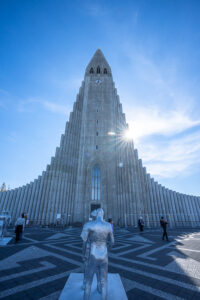
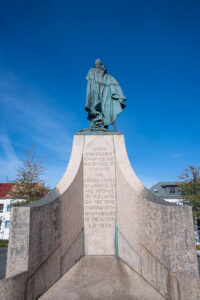
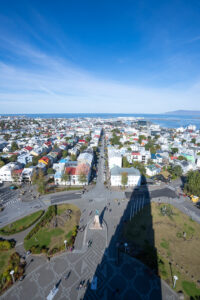
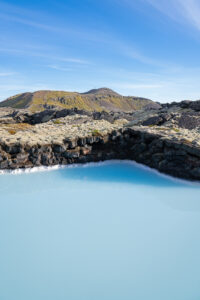
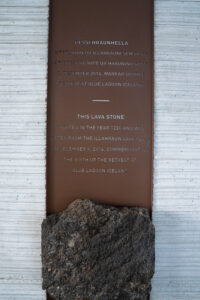
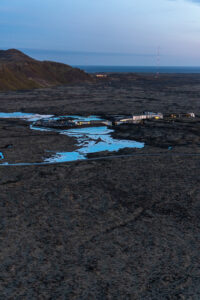
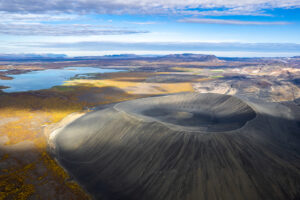
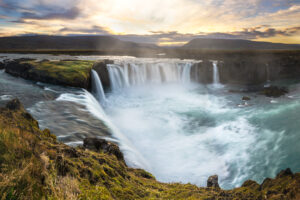
Leave a Reply